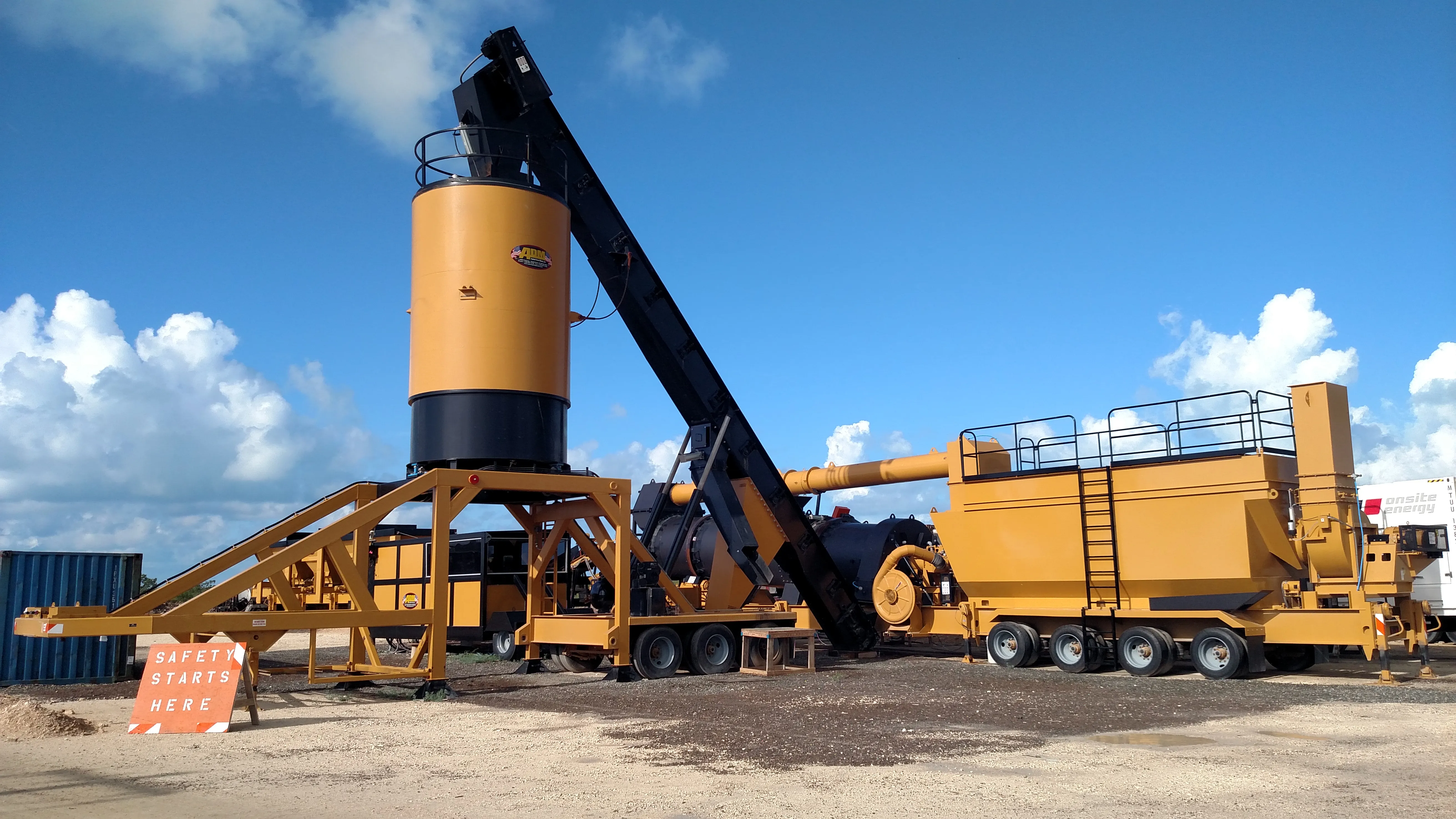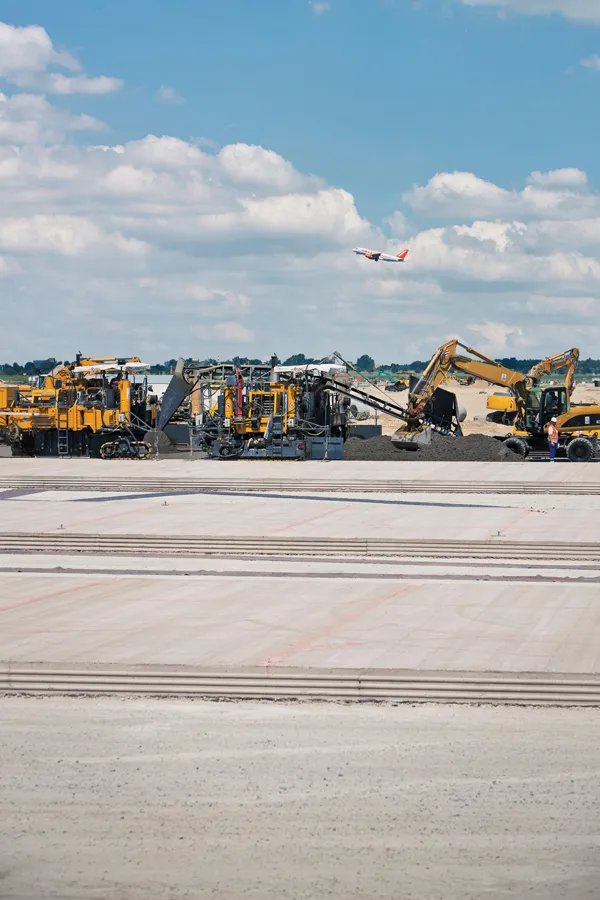
An asphalt plant from
Herzog Caribbean recently took delivery of its new asphalt plant to supply material for the runway overhaul on South Caicos Island. The plant, an ADM EX120, delivered 23,000tonnes of material for the project without any downtime, allowing for an April 2017 completion. A division of Missouri-based Herzog Contracting, Herzog Caribbean operates out of Providenciales, the capital city of Turks & Caicos, British West Indies. While most of its work is in the Turks & Caicos chain, the company has carried out projects elsewhere in the Caribbean.
According to Michael Eddy, Herzog Caribbean’s vice president, the firm has considerable expertise in general contracting and has laid a lot of asphalt throughout the region. The South Caicos International Airport project required a total replacement of the runway, taxiways and apron. Being completed in three phases, the project has been needed to meet immediate demand and anticipated future growth, particularly from tourism.
The island has one resort in operation and another major development is nearing completion. Aside from a ferry which runs once a week, daily small-airline flights are the only way onto South Caicos, and the airport runway was overdue for an upgrade.
When the move was made to replace Runway 11/29, it was also decided that it should be upgraded in anticipation of larger aircraft. The 1.98km runway will be capable of handling planes up to an Embraer 175 in size while with structural modifications, it could cope with a Boeing 737.
After completion of a project in St Lucia, Herzog Caribbean was approached about selling the 150tonne/hour ADM asphalt plant it had been using. The firm has a permanent plant in nearby Providenciales and had no immediate requirement for a mobile plant, so it sold the unit. But four months later the company was awarded the bid for the South Caicos airport project and needed a new plant.
After looking at other plants the firm opted to stay with the ADM product, but selected a smaller mobile 120tonne/hour counterflow EX Series system. Though the plant is designed for optimal transport, the contractor made some modifications to the standard configuration to better suit its needs.
One change was a standalone control room rather than the standard economy control cab. Eddy explained that the salt air on the islands is tough on equipment and particularly corrosive on electrical contacts. The electrical switch gear was installed in the control room to eliminate that issue.
The company also chose to fit a 50tonne capacity silo and, along with the separate control room, this added another trailer load when the plant was packed for transport.
Despite the compact design, the EX120 plant is still said to offer most of the features of its larger counterparts. This includes ADM’s proven counterflow technology, which uses separate drying and mixing zones for efficient heat transfer and lower fuel consumption. In addition, ADM says that the system minimises hydrocarbon emissions common, while any residual gases are reintroduced back to the combustion zone.
The airport may be small but its specifications were still tight, with a standard Superpave mix used for the runway. Eddy explained that the Superpave type has proven itself as a good mix design for minimising rutting and cracking, adding that the EX120 handled the mix well, with the plant achieving a steady 110tonnes/hour with no issues. For the actual paving itself, the contractor laid 152mm of cement treated base, then covered that with 105mm of asphalt, placed in two separate lifts.
Although Herzog Caribbean does not have an overabundance of milled asphalt available on South Caicos, the firm still ordered the EX120 with a capability for producing RAP. Eddy explained that the high shipment costs for bitumen means that the firm has an eye toward the future and is keen to utilise RAP as much as possible.
Reliability was another key issue for the firm, as shipping spares from the mainland at short notice is costly due to high airfreight charges.









